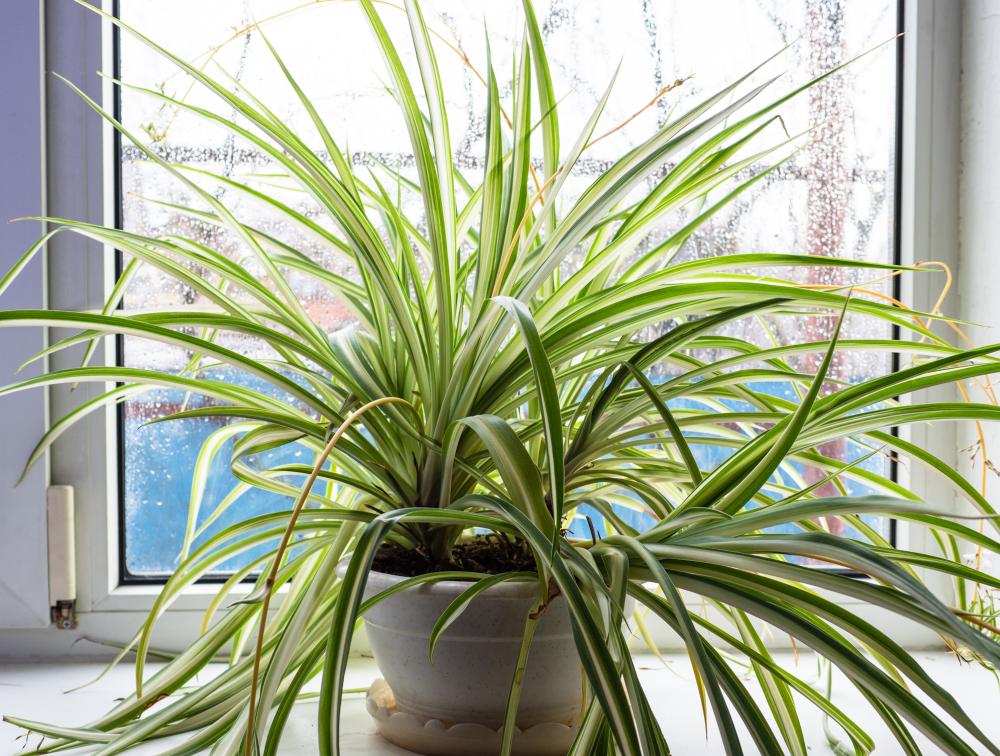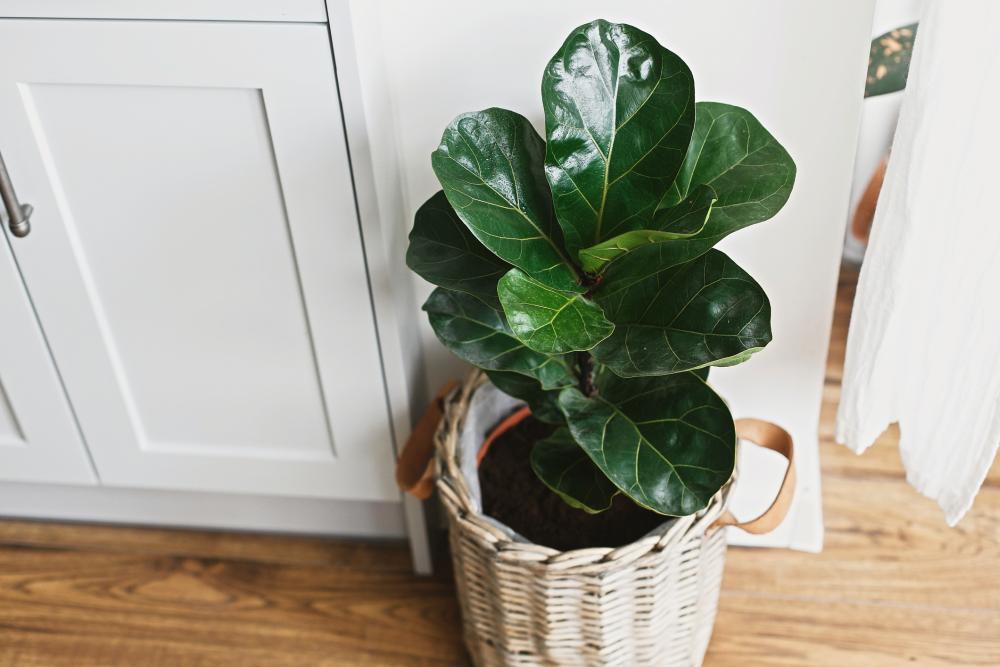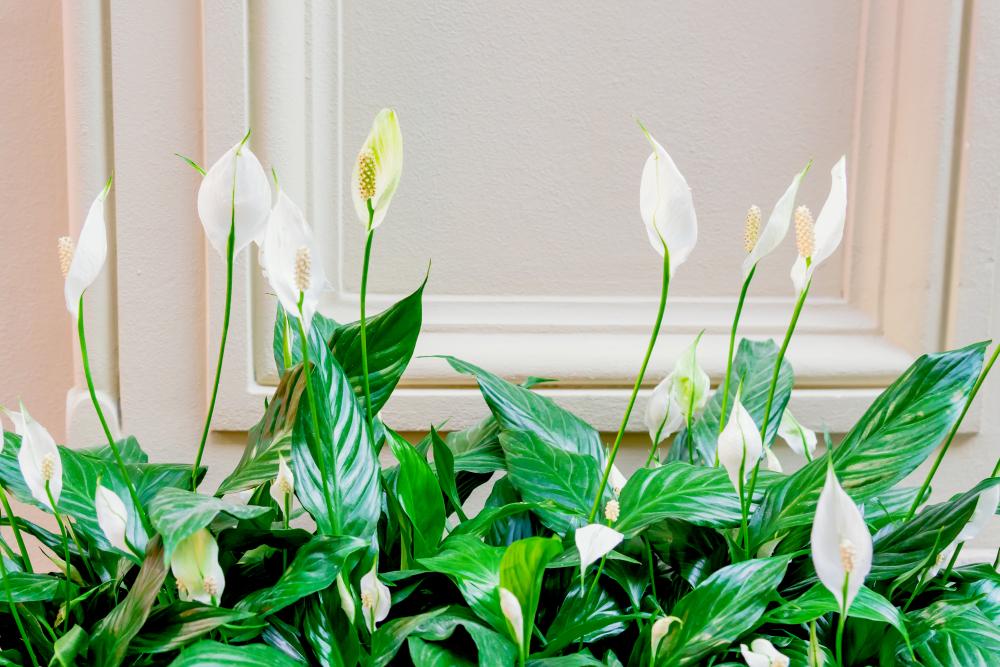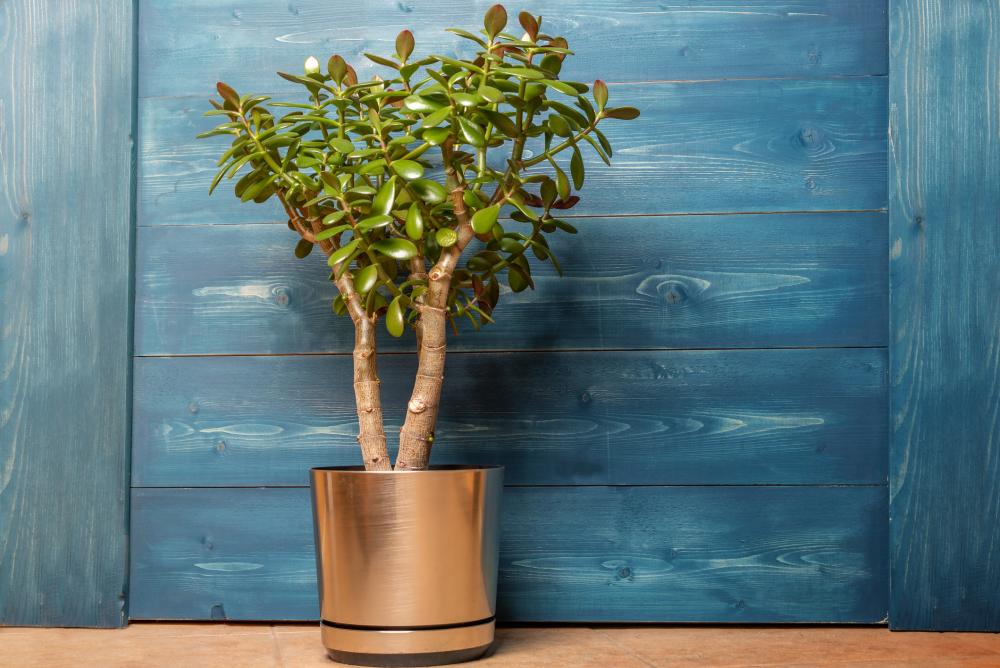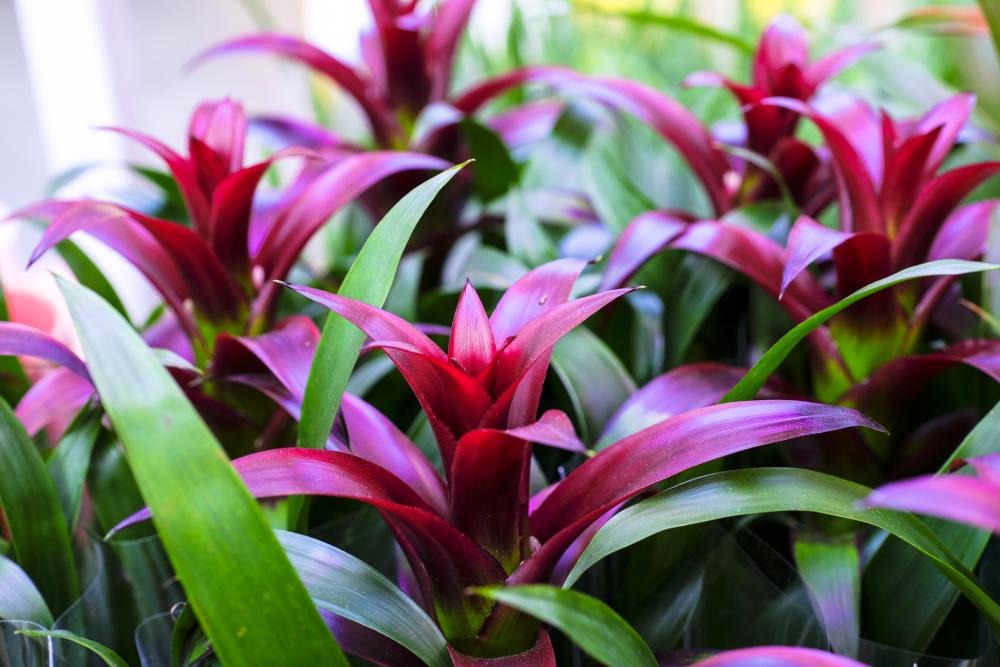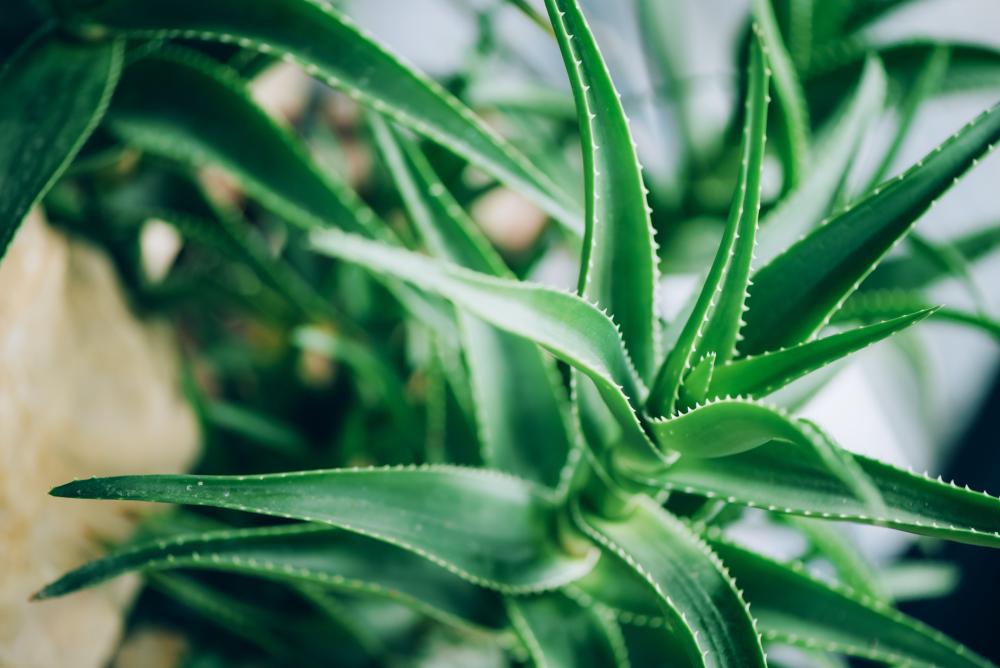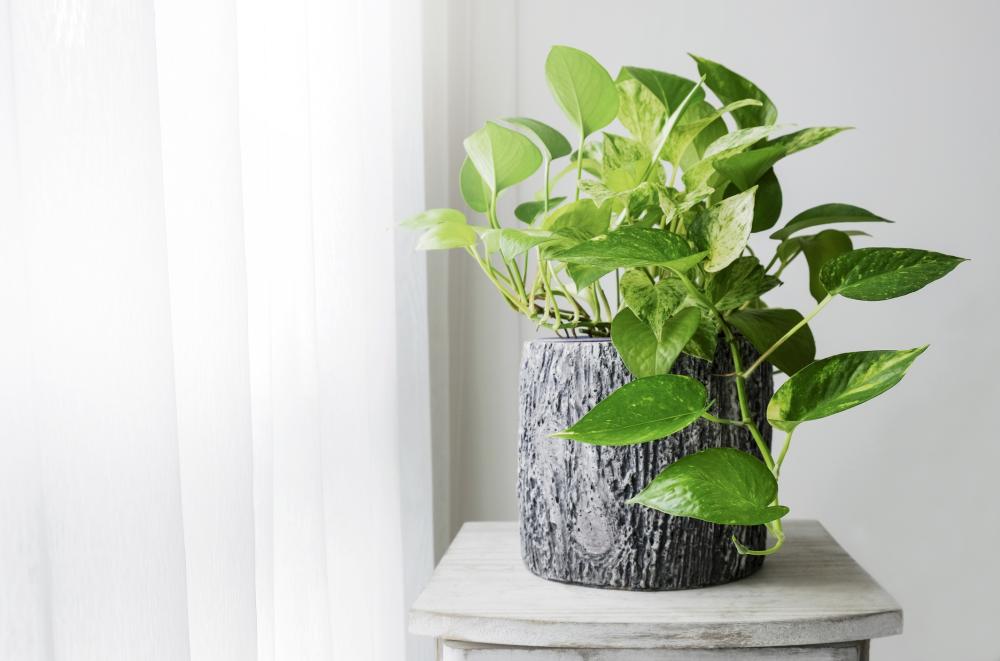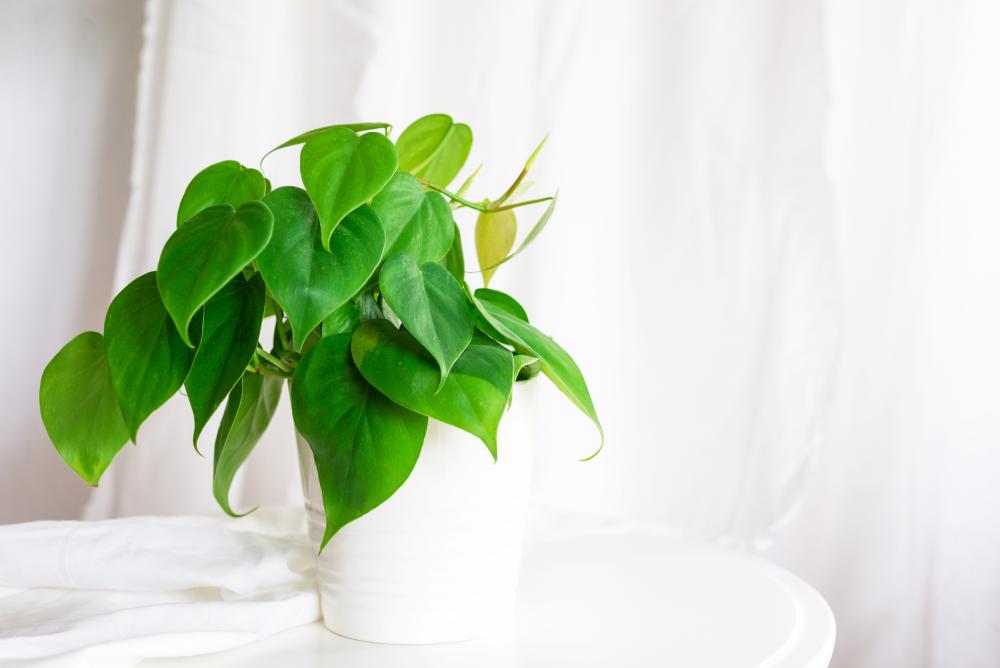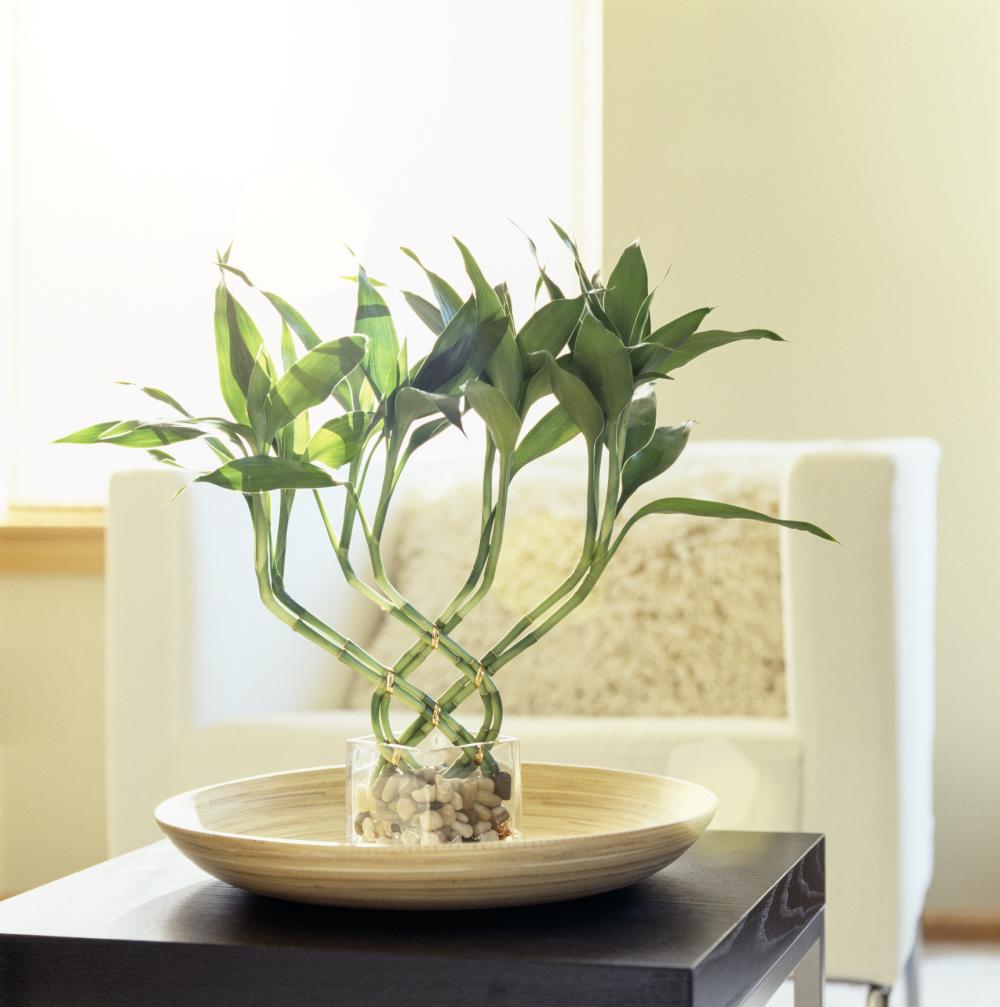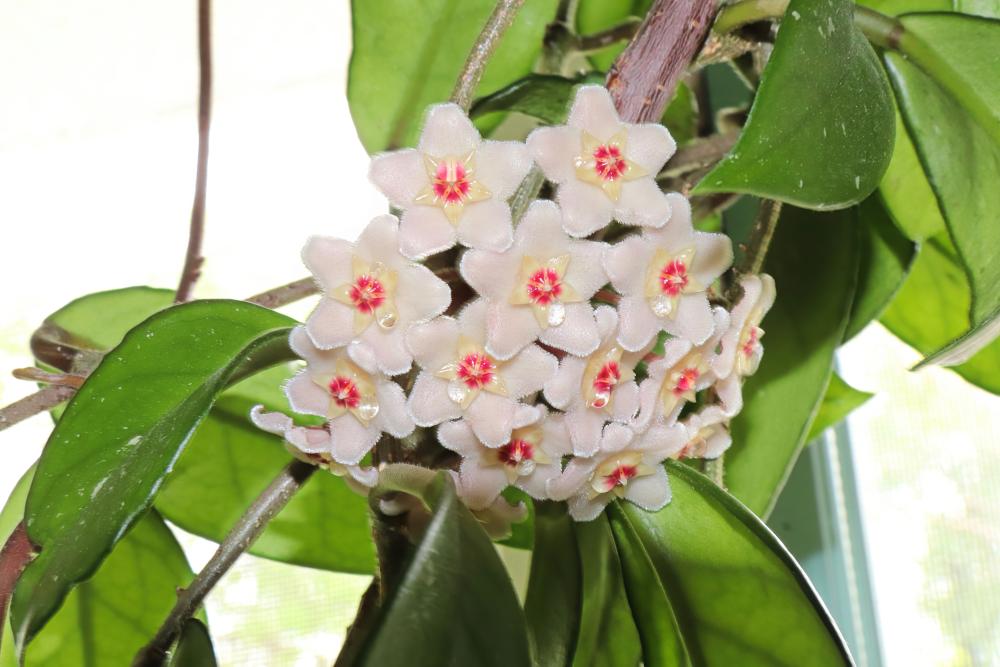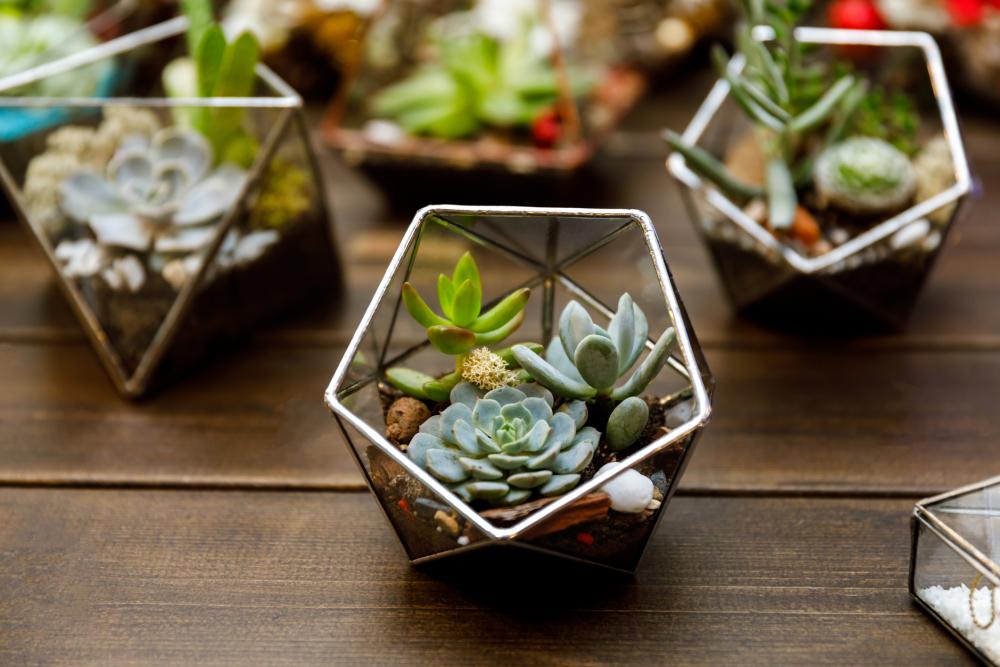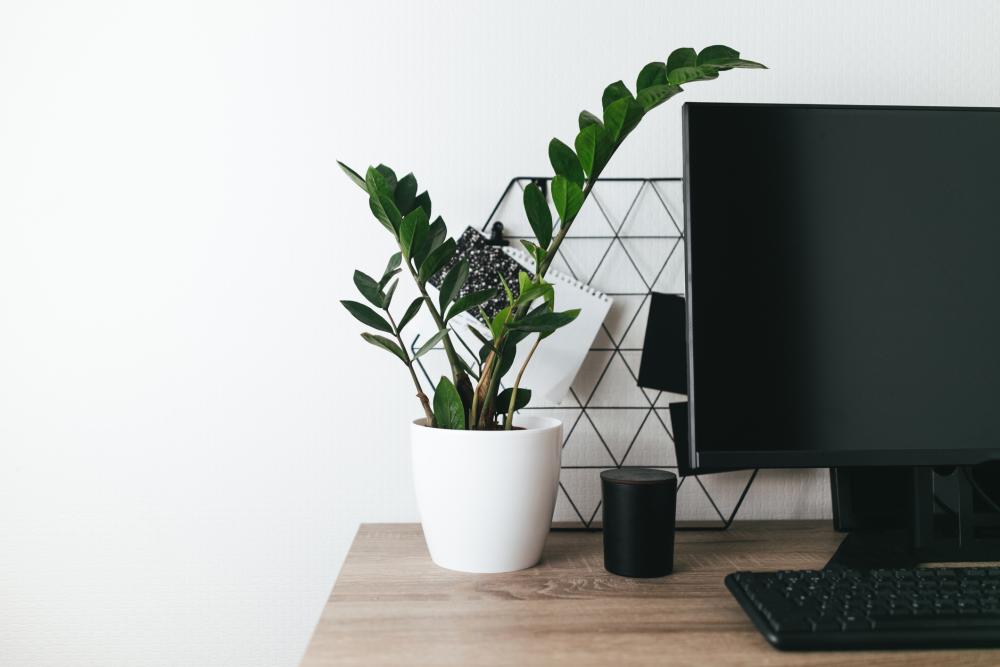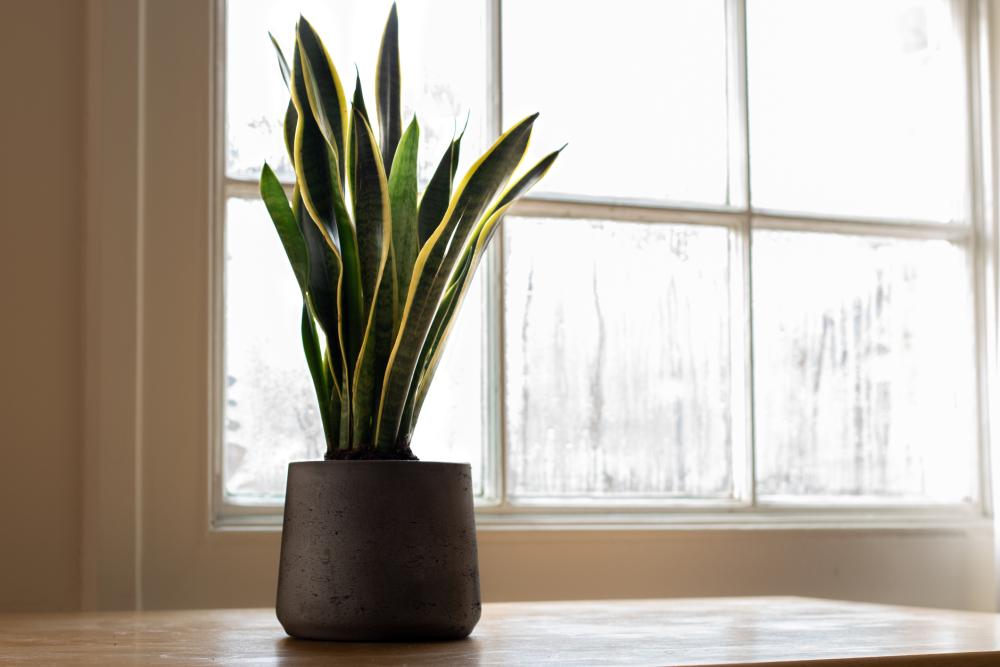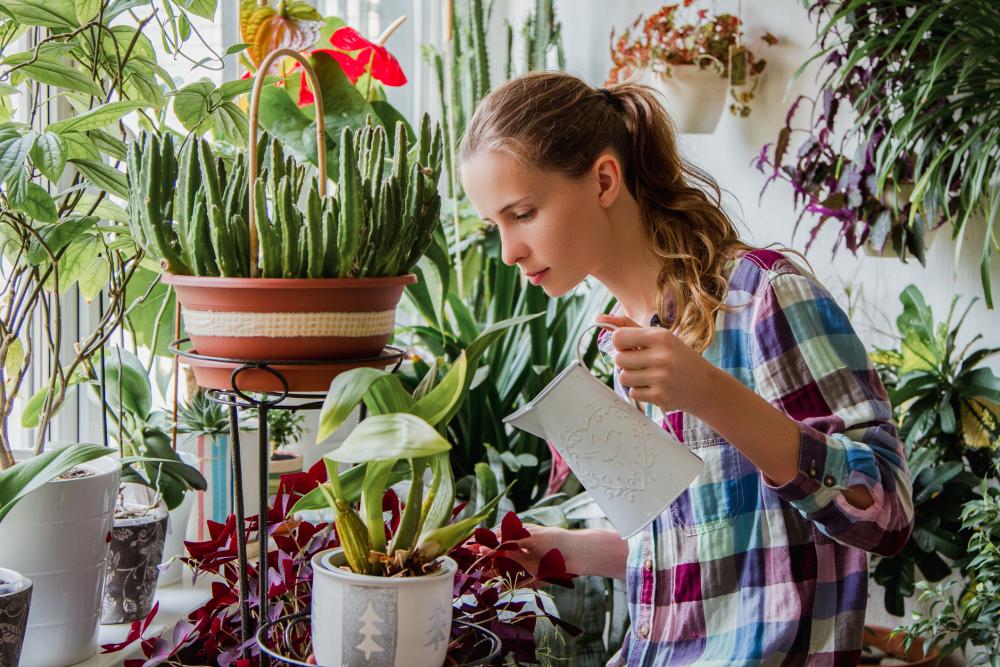The 14 Best Plants for a Dorm Room
How else do you add life, color, and an aesthetic touch to your dorm room other than adding houseplants? Plants are a sure way to brighten your indoor space while still boosting your mood.
Did you know that they help increase productivity? Indoor plants are what to go for because they are easy to maintain, are used for interior designs, and the fact that they provide health benefits, even better. Regardless of the size of your dorm room space, it’s possible to grow indoor plants.
However, you need to consider growing plants that are low maintenance – those will not limit even with a busy school schedule. Neglecting plants may eventually cause death. Generally, indoor plants are purchased while already in containers, so they don’t require planting.
Dorm Room Plants at a Glance
You will only be required to do the planting if the plant has grown too big and needs to be replanted in a bigger container, or you need to change the soil which may have depleted its nutrients over time.
The best indoor plants will tolerate low to medium light and low humidity. They also don’t grow too much that they would overwhelm your space. If you have no reason to prune your indoor plants, don’t do it. Only prune them when they become leggy.
Some indoor plants will need misting to avoid the risk of overwatering them. When choosing the perfect indoor plant there are a few pointers you want to look at. First, you want to consider picking a plant with a good root system. A plant with a good, healthy root system will thrive well. It will absorb the necessary water and nutrients without struggling.
On the other hand, you want to avoid one with roots that spread wide since there are high chances you’ll need to grow an indoor plant inside a medium-size container.
You might also prefer to grow a houseplant with a particular foliage color. While this is a worthwhile feature to put into consideration, it’s essential to learn if the plant you’re looking to grow indoors struggles with common diseases or pests.
Some symptoms like bad odor, white dots, or sticky residue on the leaves are a sign of a disease-infected plant. It’s best to know any issues you might have to deal with while taking care of your houseplant. In this guide, you’ll find the 14 best houseplants that are perfect for your dorm room.
14 Best Indoor Plants for a Dorm Room
1. Snake plants (Sansevieria trifasciata)
Snake plants are a popular type mostly used in interior designs. The perennial succulent prefers an indoor setting as it’s not accustomed to the scorching sun.
Snake plants are extremely low maintenance and require little water for survival-the roots rot if overwatered. They are durable plants, easy to grow. Even though they’re slow growers, they are quite hard to kill. People plant them indoors because it regulates and improves airflow, especially in the bedroom.
This plant thrives best in bright, indirect light, and well-drained soils. It also tolerates low humidity and cool temperatures. Most of all, you have the option to pick from a bunch of commonly grown varieties that come in different shapes and sizes.
- Light-Bright, indirect light with partial shade.
- Soil requirements -well-drained soil.
- Water- water once the soil is entirely dry
2. ZZ Plant (Zamioculcas zamiifolia)
If you’re an adept gardener or horticulturist, you probably know a few cues about ZZ plants. These are some of the easiest to grow indoor plants as they are low maintenance.
They also aren’t fussy about light conditions, making them perfect for a dorm room. ZZ plants are drought-resistant plants that require little watering. They have fleshy rhizomes that help store water for a long time. A mature ZZ plant will grow up to 2 to 3 feet high and wide.
You’ll find them thriving well in low light but they also do well when growing under bright indirect sunlight. However, its leaves may start browning if placed in direct sunlight, for a long period. Plant them in well-drained soils and remember to water occasionally, like twice a month when the soil is completely drained out.
Rotting of the roots may occur if overwatered, leading to the death of the plant. Fertilizer may be required once or twice a year. When doing routine maintenance, you want to wear protective gear since ZZ plants are poisonous.
- Light-bright,low light
- Water- on a need basis
- Soils- well-draining soil
3. Succulents
Succulents are thick, fleshy plants that can keep up with harsh conditions. There are many different varieties of succulents in existence. Growing and maintaining them requires more or less the same conditions and routine grooming.
Some indoor succulents are slow-growing and petite in nature, making them perfect for indoors. They thrive quite well in dry spots with full sunlight.
Exposing them to too much water would be a problem as they prefer dry, well-draining soil. It’s also worth noting that succulent pots are a good way to keep your succulents healthy, aesthetically designed, and attractive.
- Light: full sunlight
- Water: little water
- Soils- dry, well-draining soil
4. Hoya
Hoya is a tropical plant that is characterized by its deep green, waxy leaves and star-shaped flowers that have a sweet scent. They require bright indirect light and well-drained soils to thrive.
Have a watering routine that allows the soil to dry out between waterings because too much water could kill the plant. The hoya plant loves high humidity, most wax plants.
Hoyas often look petite, so you won’t have to dedicate too much space when growing them indoors. Also known as the wax plant, this indoor type grows at a sluggish pace but spreads wide to cover a medium-sized hanging basket.
- Light-bright, indirect light
- Water- moisten the soil lightly after drying up
- Soil requirements- dry, well-draining soil
5. Lucky Bamboo (Dracaena sanderiana)
If you’re strapped on space but still need to grow a tree-like houseplant, then look no further. As the name suggests, lucky bamboo resembles bamboo but it’s actually not one. It is planted in small containers that serve indoor purposes.
Lucky bamboo thrives well in bright to indirect light and prefers moist soil for its survival. Remember to change the water every week to prevent the growth of the algae organisms. It has long, green leaves that are widely spread out in the long stems.
What makes the lucky bamboo perfect for beginners looking to own one without stepping foot in a gardening store is you can reproduce it using cuttings. Even though its appearance looks somewhat invasive, there won’t be a need for regular pruning.
- Light-bright, indirect light
- Water- once the soil feels dry
- Soil requirements- loose, well-draining soil
6. Heart Leaf Philodendron
The heartleaf philodendron is an exotic indoor plant with dark green foliage and heart-shaped leaves. It’s one of the primary reasons why the plant is used as a gift during anniversaries.
This is an ideal dorm room plant because it requires extremely low light for its survival. It has green leaves with a glossy surface and grows up to 13 feet high. Place them in low light spots with dry air. It can also tolerate medium humidity.
Heartleaf grows well in moist soil with moderate watering. Since the stems elongate in a vining pattern, you will need to occasionally prune the plant. Overall, taking care of the heart leaf philodendron indoors is fairly easy since it can keep up with a low light environment.
- Light: bright, low light
- Water: once the soil feels dry
- Soil requirements- well-draining, partly wet during sunny days
7. Pothos
Just like the Heart Leaf Philodendron, pothos has leaves with a very glossy surface. Pothos require little effort to maintain, making them perfect dorm plants. They grow up to 40 feet high and have climbing vines that grow up to 6-8 feet long.
The climbing vines make them perfect for hanging. Get a good hanging planter to hang this plant for its attractive climbing vines. Pothos come in different colors and are extremely low maintenance. They grow and thrive in different light conditions.
For example, the ‘golden pothos’ prefer medium-light with no sun. While they prefer moist soils, most of the pothos are highly drought tolerant. Make sure to wipe off any accumulated dirt on its leaves.
- Light- bright, low light
- Water-Water once the soil dries off
- Soil requirements- moisture-retaining soil
8. Aloe Vera
Aloe vera is a succulent that is perfect as a houseplant. Mostly, they prefer medium light, limited direct sun. When exposed to low lighting, its leaves may hang downwards.
Generally, aloe vera is a drought-resistant plant that can retain water for future use. It does not require constant watering as this could lead to root rot, eventually killing the plant. Water only when the soil is dry and drained.
Apart from being perfect for indoors, aloe vera is planted by many for its gel. Aloe vera gel has medicinal values, it soothes, cools, and moisturizes burns and sunburns. It can also be used as an ingredient to treat skin conditions like acne. Did you know that aloe vera gel can also be used in yogurts, desserts, and general beverages?
- Light-medium, limited direct sun
- Water- water once the soil fully dries off
- Soil requirements- loose, ample drainage
9. Bromeliad
This is an excellent dorm plant that requires little effort to maintain. Bromeliad is known for its beautiful colors and has long strappy leaves. Mostly they do not get to the flowering stage when put indoors as much as they do flower.
This plant thrives in high yet indirect light as the direct sun may damage the leaves. It also prefers dry soil with medium humidity, to explain that it’s not a plant that requires constant watering. Ensure the soil is completely dry before watering- watering once a week perfectly works for this plant.
- Light- bright, limited direct light
- Water- water once the soil fully dries up
- Soil requirements- good drainage
10. Money Tree (Pachira Aquatica)
Commonly known as ‘Guiana Chestnut’, the money tree serves as an excellent dorm plant because it requires bright, indirect light. It’s considered one of the easiest indoor plants to grow because it is tidy and grows within the space that you want it to grow.
Interestingly, they grow perfectly well even with overwatering. This plant loves moist soil and since it loves indirect light, place it in a fairly sunny spot. Create a routine to water it once or twice a week.
- Light: bright,indirect light
- Water: regular watering
- Soil requirements- moisture-retaining soil
11. Peace Lily
This is a houseplant that grows up to 3 to 6 feet high. What makes it perfect for indoors is because it has no specific time to bloom. Just like the snake plant, this plant is also popularly used for interior designs. The peace lily grows and thrives well in moist soil.
The soil should not get soggy-allow the soil to dry between waterings. Lack of enough water may also cause wilting-the leaves to start yellowing. It’s a low-maintenance plant with leaves that have a glossy texture. Generally, it grows well in medium light and has a white flower that pales out to the color green after every 10 days.
- Light: bright, indirect light with partial shade
- Water: regular watering
- Soil requirements- moisture-retaining soil
12. Fiddle-leaf fig tree(Ficus lyrata)
A young fiddle leaf fig tree is perfect for desks and tabletops. When mature, even more, perfect for the living room or office space. They grow well in bright light and dry soil. Overwatering may damage this plant. It’s easy to take care of this plant as long as it gets enough natural light.
- Light: bright,natural light
- Water: Water once the soil has fully dried up
- Soil requirements- dry, well-draining soil
13. Ferns
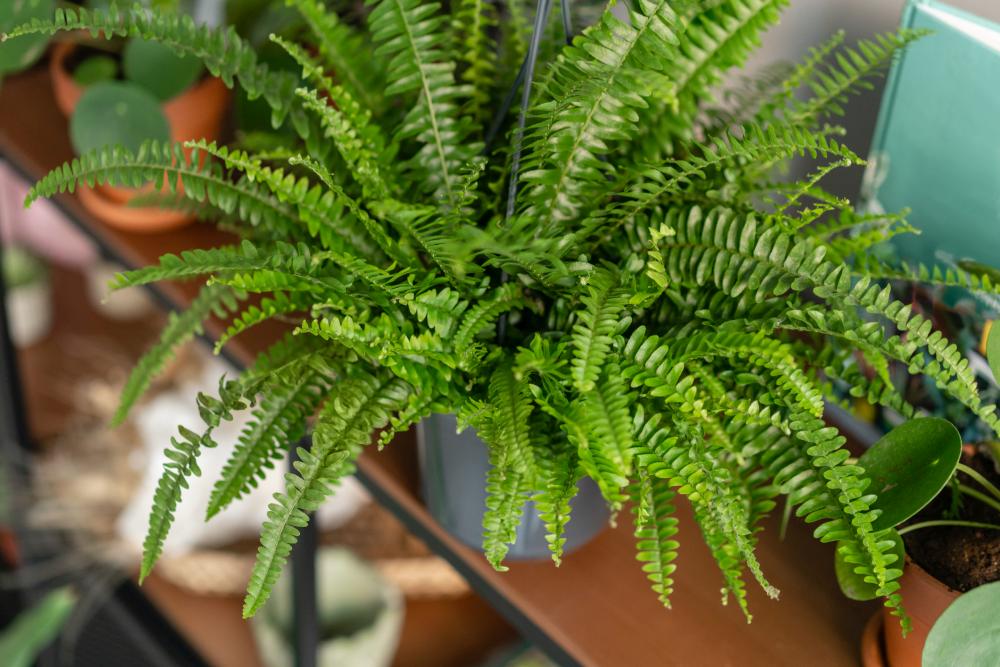
Ferns come in different varieties and they make good dorm plants because they bring beauty to any room. Ferns also come in different colors and textures.
Generally, ferns are wonderful, low-maintenance plants. They are known for filtering air by removing any air pollutants. Place them in medium to bright light with high humidity. Soils with good drainage works for them and occasionally adding fertilizer would be okay.
- Light: medium bright light
- Water: Water once the soil is fully dried up
- Soil requirements- high organic matter, well-draining soil
14. Spider Plant
This plant grows well in medium light levels with some sun but can also tolerate some shade. It also thrives well in moist soil and medium humidity. Spider plant is a dry soil and drought tolerant plant -It retains water well. They are not to be watered using tap water as the chlorine in the water may easily burn the leaves.
- Light: medium bright light
- Water: Water once the soil has fully dried up
- Soil Requirements- Moist, well-draining soil
